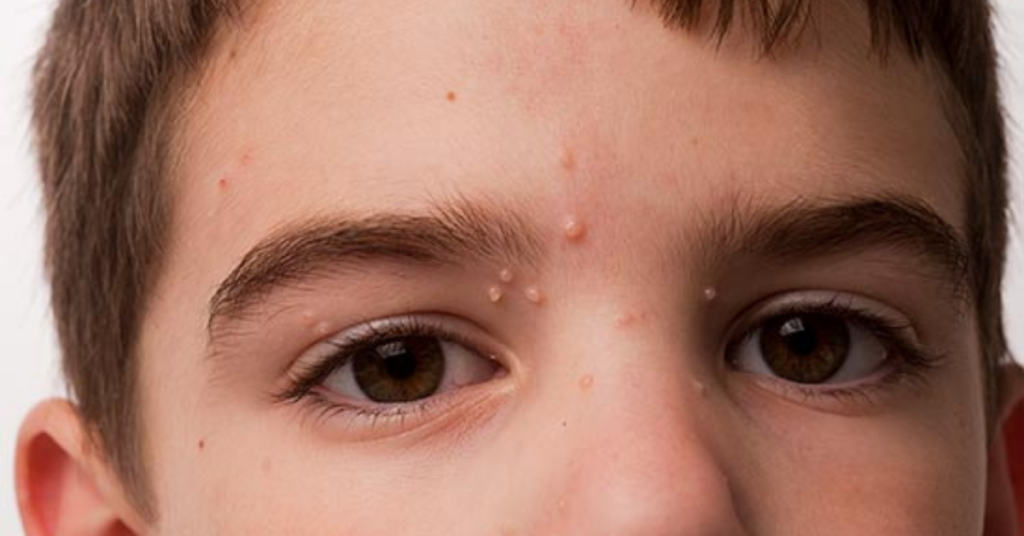
01
Molluscum Contagiosum
Molluscum Contagiosum is a common skin infection which can spread easily from one person to another. The infection mostly affects children under the age of 15 years.
02
Acne Treatments
Acne (pimples) is a common problem in teenagers and also in some adults. It ranges from the formation of open or closed comedones (black or whiteheads respectively), pustules (red or yellow bump and nodules & cysts) (large, red or skin colored deep-seated bumps) with or without pain.


03
Pigmentation
In simple words, pigmentation means colouring. When it comes to our skin, the colour of our skin is determined by a pigment called melanin. The production of melanin is undertaken by specialized cells in our skin. Any negative impact or damage caused to these cells affect the melanin production in our body and hence causes skin pigmentation.
04
Melasma
Melasma is a common skin problem that involves formation of brown to grey brown patches especially on the face. The facial areas which commonly are a victim of these patches are the forehead, bridge of the nose, cheeks, chin and the upper lip. These patches also develop on parts of the body which are constantly exposed to the sun.


05
Vitiligo
Vitiligo is a pigmentation disorder wherein cells that make pigment (melanocytes) in the skin are destroyed. Owing to this, white patches start appearing on the skin in different parts of the body. The same patches also appear on the mucous membranes (tissues that line the inner part of the mouth and nose) as well as the retina (inner layer of the eyeball).
06
Psoriasis
Psoriasis is a non-infectious skin condition that produces red, dry plaques of thickened skin. The dry flakes and skin scales occur as the result of the rapid proliferation of skin cells triggered by irregular lymphocytes from the blood. It commonly affects the side of the elbows, knees, and scalp, and can be more common in areas of abrasions, trauma, and repeat rubbing.


07
Urticaria
Urticaria,also known as Hives is a disease which is characterized by the sudden development of itchy and swollen bumps on the skin. These bumps can appear if the body reacts to any allergens or can even appear for reasons not known. They last for less than 1-2 days in the same spot and once they disappear, they don’t leave any trace/scar behind. However, when these bumps develop under the skin, the condition is termed as Angioedema.
08
Freckles
Freckles are multiple, flat, spots on the skin due to uneven distribution of melanin (skin pigment) in those areas. They are usually situated on sun-exposed areas of the skin, including the face, neck, arms, and shoulders and usually darken after sun exposure. Usually, freckles start to occur at a very young age. Freckles most commonly occur in people with lighter or fairer skin types, and in those who have a genetic predisposition to developing freckles.


09
Nail Disease
Your toenails and fingernails protect the tissues of your toes and fingers. They are made up of layers of a hardened protein called keratin, which is also in your hair and skin. The health of your nails can be a clue to your overall health. Healthy nails are usually smooth and consistent in
color. Specific types of nail discoloration and changes in growth rate can be signs of lung, heart, kidney, and liver diseases, as well as diabetes and anemia. White spots and vertical ridges are harmless.
10
Keloids
A raised scar after an injury which has healed is known as a keloid. When skin is injured, fibrous tissue called scar tissue is formed over the wound to repair and protect the injury. In some cases, scar tissues grow excessively developing smooth, hard growths called keloids.


11
Fungal Infection
Fungal infection occurs when an area of our body is overtaken by an invading fungus, the capacity of which becomes too much for the immune system to handle. The fungus grows best in a warm and moist climate which increases the cases of fungal infections in summers & rainy season.
12
Atopic Dermatitis
(Atopic dermatitis, AD in short) is a very itchy chronic skin condition. It often presents in infancy or early childhood but can start in adult life too. Around the world, 10-20% of children and 3-4% of adults suffer from Atopic dermatitis. AD is much more common today than it was 30 year ago.


